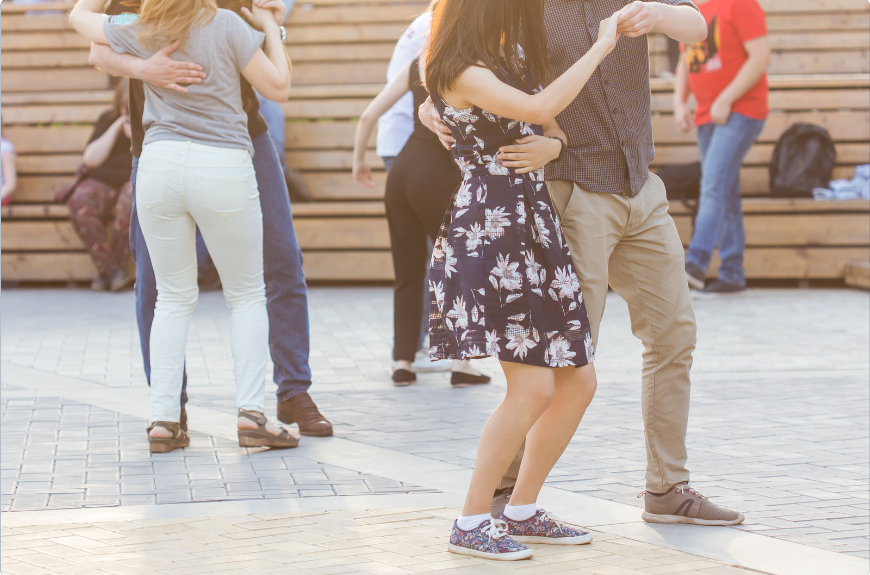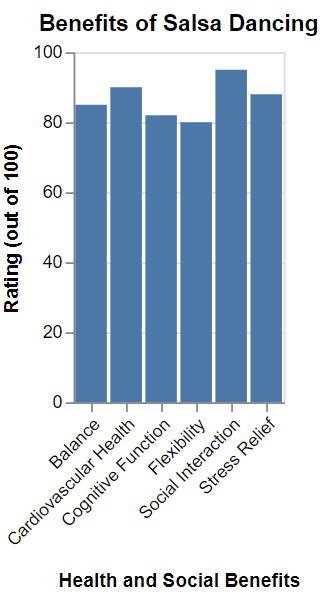Is There an Age Limit for Salsa Dancing? Embrace the Salsa Rhythm at Any Age
Exploring Salsa: Is There an Age Limit for Salsa Dancing?
For many people, the idea of dance may be tied to youth. They may see it as a vigorous and demanding activity that requires flexibility, agility, and stamina, typically associated with the younger generations. However, salsa, a Latin dance form, seems to break the mold in this respect. This article will explore the question: Is there an age limit for salsa dancing?
Is Salsa Dancing Hard On Your Knees?
Before diving into age-related questions, let's address a common concern: is salsa hard on your knees? Like any form of movement, salsa dance demands a certain physical effort. However, it is a dance that can be adapted to suit a range of physical capabilities. The key lies in good technique, proper warm-ups, and listening to one's body. Properly taught and executed salsa is easy on the knees. When done correctly, it's a gentle dance form that promotes overall body health and strength.
Can I Learn Salsa at 40?
A straightforward answer to this question would be a resounding yes. Age matters little when it comes to the joy of dancing. Anyone, regardless of their age, can learn salsa. It's all about the willingness to learn and the passion for rhythm and movement. While people of all ages might find the prospect of taking dance classes intimidating at first, the reality is that salsa classes are typically welcoming environments for people from all walks of life and, yes, all ages.
To sum up, age is not an impediment when it comes to learning salsa. Therefore, in response to the query, "Is There an Age Limit for Salsa Dancing?" the answer is definitively no.
All Ages Welcome to Salsa Classes
In Australia, it's not uncommon to find dance classes filled with people aged anywhere from 20 to 70 years, and sometimes even more. The beauty of salsa is that it is a dance form that can be adapted to suit any fitness level and age group. Many dance schools even offer aged care, home classes, bringing the joy of salsa to those who might not be able to attend regular dance classes.
There's no minimum age for starting salsa classes. Young children can enjoy salsa's fun and energetic movements, helping them develop their coordination and rhythm from a young age. Likewise, there's no maximum age either. Many students start salsa later in life, finding a new passion and a great way to stay active and socialize.
A Range of Salsa Classes to Suit Everyone
Salsa classes come in various formats to accommodate everyone, from absolute beginners to advanced dancers. The typical group class is a great way to meet people and learn in a fun, supportive environment. For those looking for more personalized teaching, private lessons are also available.
Furthermore, there's the option of bachata dance classes. Bachata is another Latin dance style that is often taught alongside salsa. It has a slightly different rhythm and style, but many of the principles are the same, and it's another fun way to get moving.
The structure of the classes typically involves a warm-up, teaching of new moves or techniques, practice time, and then a cool-down period. Each lesson is carefully designed to ensure students are learning and progressing while having a great time.
Age Doesn't Restrict The Joy Of Dance
Salsa is a dance that radiates joy and positivity. It's a dance that encourages movement and expression and doesn't discriminate based on age. Students from all age groups regularly enjoy salsa classes, proving that age is no barrier to this vibrant dance style. It's common to find students in their 60s, 70s, or even 80s in a salsa class. These dancers are a testament to the fact that you're always young enough to learn something new and have fun while doing it. Dancing salsa can bring a new spark to life, offering a weekly escape into a world of rhythm, movement, and social connection. The age range in a salsa class also brings diversity and richness to the experience. Younger students can learn from the wisdom and experience of older dancers, while older students can feed off the energy and passion of the younger ones. It's a mutually beneficial environment where everyone is there for the love of dance.
Dancing at Aged Care Homes
Aged care homes in Australia have started recognizing the immense benefits that salsa dancing can offer their residents. Salsa classes at care homes have become increasingly popular, providing a fun and engaging activity that promotes physical health and social interaction. These classes are usually adapted to accommodate the physical abilities of the residents, with many of the movements done while seated. Even with these modifications, the essence of salsa remains. It's still a vibrant and joyful dance that brings smiles to faces and gets bodies moving, regardless of age. For more insights into the benefits of salsa dancing for older adults, consider exploring this study, which investigates the effects of salsa dance training on balance and strength performance in older adults.
Why Age Shouldn't Stop You From Dancing
So, is there an age limit for salsa dancing? Not. Age is just a number, and when it comes to salsa, it's a dance that embraces people of all ages. Age shouldn't be a barrier to trying something new, finding joy, and keeping active. Salsa classes offer all of this and more. They provide a fun, social environment where students can learn a new skill, keep their bodies moving, and even make new friends. Regardless of age, if you've ever thought about trying a dance class, why not try salsa? You'll find it a great addition to your week, bringing fun, movement, and music into your life.
Watch this inspiring video of elderly couple enjoying salsa dancing!
Conclusion
There are no age limits for salsa dancing. The dance is inviting and accepting to all. Whether you're considering taking up dance for the first time, looking to try something new, or a seasoned dancer exploring different dance forms, remember this – salsa is a dance for everyone. It welcomes any and everyone to its rhythm-filled world, offering a fun-filled break from life. So, please give it a whirl. You might just find your new passion!
Frequently Asked Questions
What muscles does salsa work?
Salsa dancing is a fantastic full-body workout. When dancing, you're engaging a wide range of muscles, including your core, quads, hamstrings, and calves, due to the footwork. As salsa incorporates a lot of spinning and turning, it also works the obliques and other core muscles. Upper body muscles, such as the arms and shoulders, lead, follow, and execute various moves. Attending salsa classes can be fun to work these muscles and improve your overall strength.
How many calories are burned in 30 minutes of salsa dance?
On average, a person can burn around 200-400 calories in 30 minutes of salsa dancing, depending on their weight, intensity of the dance, and overall fitness level. This makes salsa and other Latin dances like bachata an excellent choice for people looking for a fun and effective way to stay active and manage their care costs. Remember, though, the key is consistency – attending dance classes regularly can help maintain your progress.
Is salsa good for anxiety?
Yes, salsa is indeed good for anxiety. The rhythmic movements and the concentration needed to follow the steps can help distract the mind from stressful thoughts. Moreover, Latin dancing like salsa and bachata creates an endorphin boost, which improves mood and relieves stress. It's a fun way for students to unwind and for older people in care centers to socialize and stay engaged. It's not just about the physical benefits but the mental and emotional upliftment that salsa dancing can bring.
What is the average age of salsa dancers?
Salsa is a dance enjoyed by people of all age groups. While the average age may vary based on location and venue, it's common to find salsa dancers ranging from their early 20s to their 70s or older in salsa classes. The beauty of Latin dancing is that it brings people together, regardless of their age, and creates a vibrant, energetic community. Whether at home or in care centers, salsa dancing brings fun and joy to everyone involved.
At what age do most people quit dancing?
The decision to quit dance varies greatly from person to person and doesn't typically revolve around a specific age. Many factors can influence this decision, such as physical strain, time commitment, changing priorities, or lack of interest. However, it's common to see a drop in dance class attendance from the late teens to early twenties. This is often when students move away for college or start their careers, leading to less time devoted to dancing. Nevertheless, it's important to note that leaving formal dance classes only sometimes equates to quitting dance entirely. Many continue to enjoy dance in various forms throughout their life. Those who pause dancing for years can be drawn back to dance classes later in life. Therefore, while there might be shifts in engagement with dance, it's not always a matter of 'quitting.' Instead, it often reflects dance's evolving role in an individual's life.




